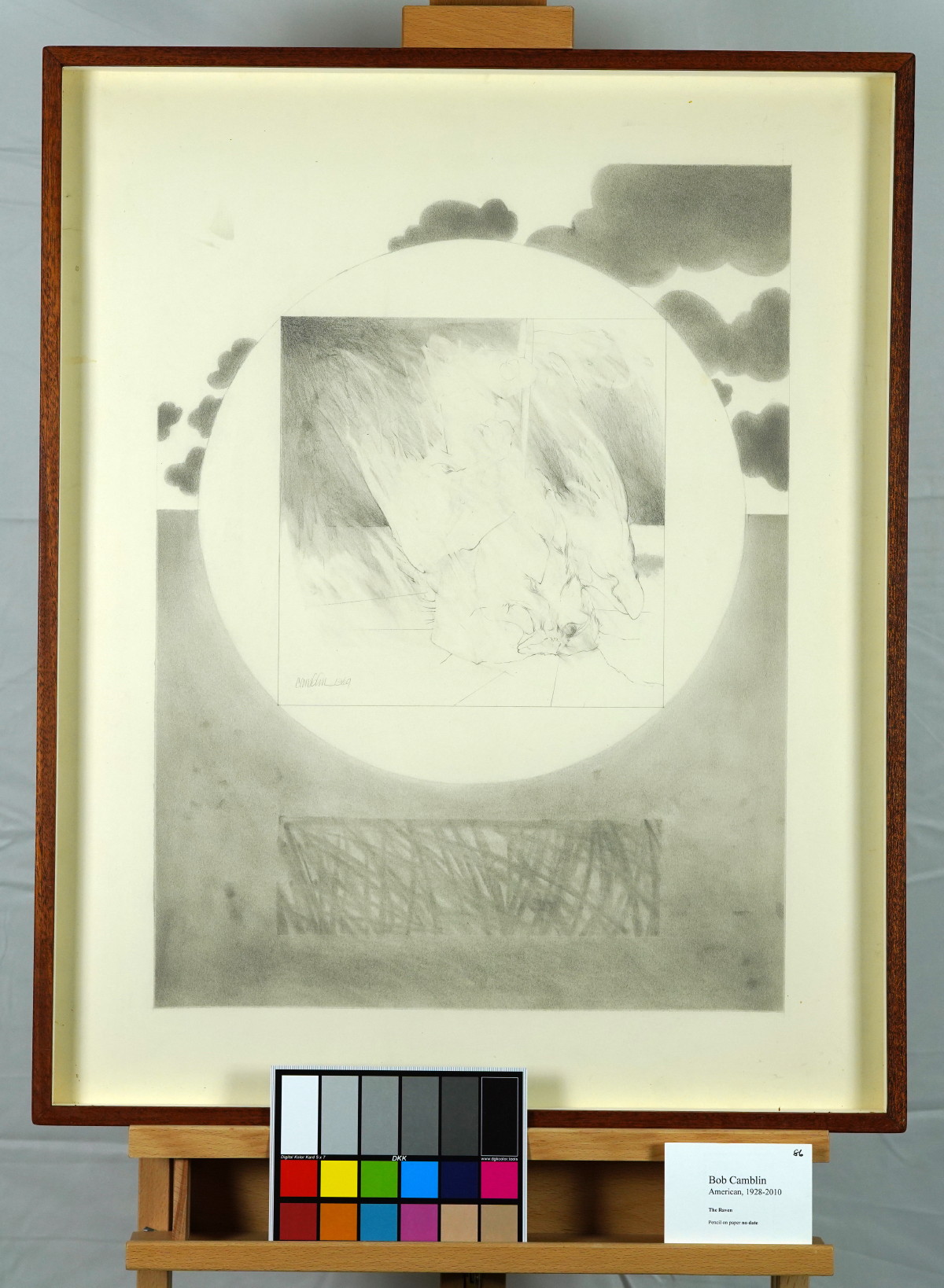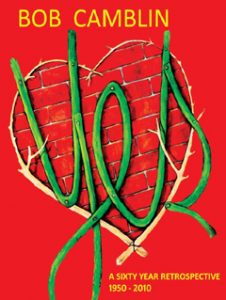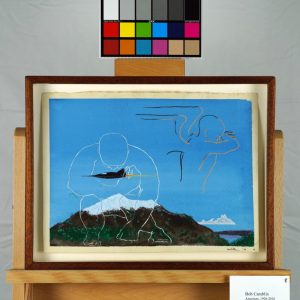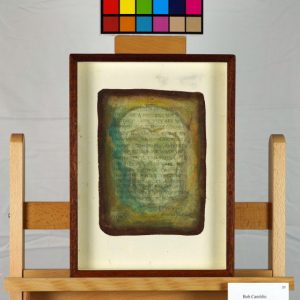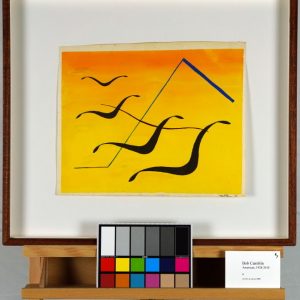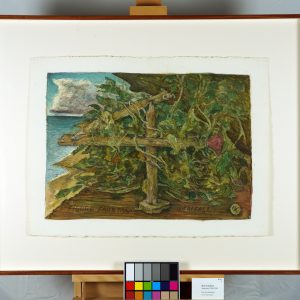Description
The Raven, 1969Pencil on paper
Signed
23.25 x 17.25 in. (image)
29.5 x 24 in. (frame)
original, includes certificate of authenticity from ArtTrust
The drawing “The Raven” presents a circular composition with a central panel depicting an abstract bird that appears to be merging or dissolving, surrounded by a soft gradient and clouds. The circular frame adds a sense of focus to the central abstract elements, which seem to represent organic shapes or forms undergoing transformation. The use of pencil and shading creates depth and an ethereal, dreamlike quality.
From a Zen perspective, the circular form can symbolize “Enso,” which is a sacred symbol in Zen Buddhism representing enlightenment, the void, and the cycle of life. The abstract shapes within the circle might signify the transient nature of existence, where forms arise and dissolve, reflecting the Zen teaching of impermanence. The ethereal quality invites a contemplative state, prompting the viewer to ponder the essence of reality beyond physical appearance.
The I Ching interpretation could relate to Hexagram 29, “The Abysmal (Water).” This hexagram represents challenges and the need for resilience, symbolized by water’s capacity to flow continuously through and around obstacles. The abstraction within the circular form can be seen as representing the flow of life’s difficulties, requiring adaptability and inner strength to navigate. The surrounding clouds might represent the unknown or the subconscious mind, reinforcing themes of internal and external challenges.
Combining both Zen and I Ching interpretations, the artwork suggests a meditation on life’s impermanence and the necessity of navigating challenges with equanimity. The circular form acts as a contemplative focus, emphasizing unity and the interconnectedness of all experiences. The central abstract shapes, resembling shifting forms, allude to transformation and the ever-changing nature of life, encouraging viewers to find peace amidst uncertainty.
The use of circular framing and abstract elements is reminiscent of works by artists who explore themes of spirituality and existential inquiry, such as Mark Rothko’s color fields or the symbolic paintings of Wassily Kandinsky. The integration of minimalism and abstraction aligns with modernist traditions, while the circular composition evokes a sense of sacred geometry found in spiritual art across various cultures. The grayscale palette adds a timeless quality, invoking a contemplative and introspective mood, characteristic of meditative art.
*Shipping cost will vary, please inquire at sales@camblingallery.com before purchasing.
Currently ships from Oregon, USA
Member of artnet? Apply for a discount! Inquire about intergallery and permanent loans for museums.
“The Raven” was featured in his Yes Retrospective
Reproductions of this drawing are available in multiple sizes!
Click here to use our high-resolution viewer!
This artwork is available with a non-fungible token to ensure traceability and transparency of provenance.
The royalty factor – Unlike traditional artworks, such as paintings, mosaics, statues, and the like, NFTs can be programmed to provide royalties to you every time the painting (and token) is sold and resold – for eternity. That mind-bending Camblin you sold could be worth millions one day and provide income for your great-great-great grandkids!
Anti-forgery – The central idea underpinning NFTs is that they are built on the blockchain, which is meant to offer advanced security. Think of it like an un-erasable and un-avoidable copyright.
Easy authentication – Another compelling aspect of NFT art and NFTs in general is the ability to quickly and easily authenticate items, as the record of ownership is scrupulously kept on the blockchain.
